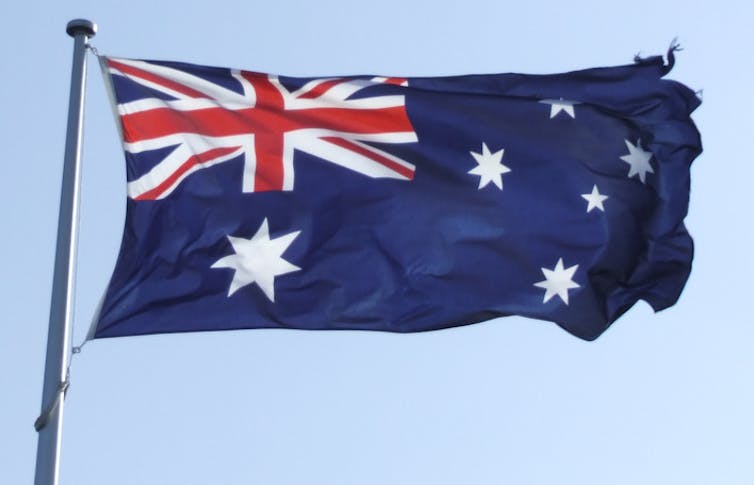What underlies public prejudice towards asylum seekers?

Many Australians feel the government should maintain a tough policy on asylum seekers who arrive by boat.
Hadi Zader/Flickr, CC BY
Anne Pedersen, Murdoch University and Lisa Hartley, Curtin University
According to a poll taken last December, 60% of those surveyed think the Australian government should “increase the severity of the treatment of asylum seekers”. What’s behind this negative sentiment (otherwise known as prejudice) towards asylum seekers in Australian society?“
One very important and consistent predictor of prejudice is the acceptance of inaccurate information, or myths, as true. A 2006 study, carried out by one of this article’s authors, identified three frequently cited myths that depicted asylum seekers as "queue jumpers”, “illegals” and not having a genuine reason to seek asylum. This study found that people who were high in prejudice were significantly more likely to accept these myths as being true.
These beliefs have been linked with government rhetoric about asylum seekers under the previous Howard government. Under the Abbott government, there has been no shortage of hostile rhetoric. The punitive asylum seeker policies of the Labor government under Julia Gillard and Kevin Rudd have also continued.
The ugly side of nationalism and perceptions of consensus
Some research links extreme levels of nationalism to prejudice towards asylum seekers. In one study into the phenomenon of flying Australian flags on one’s car for Australia Day, researchers from the University of Western Australia and Curtin University surveyed 501 people in public spaces in the week leading up to and on Australia Day in 2011.
The study found car-flag flyers rated more highly on measures of patriotism and nationalism and were significantly more likely to express prejudiced views against asylum seekers than non-flag flyers. Of those who flew flags, only 9.9% held positive views towards asylum seekers, compared to 24.7% of non-flag flyers.

Research suggests a correlation between nationalism and prejudice against asylum seekers.
Flickr/Brian Costelloe, CC BY
We have found that people who held prejudiced views against asylum seekers are also notably more likely to over-estimate support in the community for these views compared with those more accepting of asylum seekers.
A 2008 study carried out by one of the authors found while both groups over-estimated their support in the community, the effect was much more pronounced among people holding prejudiced views.
This finding is of concern because other research finds people who see themselves as having a “majority voice” are more likely to be vocal and less flexible in their views than others who see themselves as having a “minority voice”.
People who seek to be tolerant and accepting of asylum seekers often find it difficult to speak out. This compounds the problem: prejudiced people’s influence can be disproportionate to their numbers.
The role of emotion
In addition to these cognitive factors that underlie prejudice, some studies indicate community views about asylum seekers are strongly linked with emotions. Research in 2010 found people who are positive towards asylum seekers are more likely to feel empathy for them, to feel moral outrage at their situation and to express disgust and embarrassment at Australia’s policy stance.

Hostile rhetoric from our politicians can build prejudice against asylum seekers.
AAP/Daniel Munoz
Our recent unpublished study found people who held prejudiced views against asylum seekers were more likely to feel threatened by them. This was the case in regard to perceived threats to both security and “Australian values”.
Prejudiced participants were also more likely to be angry at asylum seekers for their mode of entry. Once emotions are involved, the issue becomes even more difficult to resolve.
Participants were significantly more prejudiced against asylum seekers who arrive by boat compared with refugees who were accepted offshore and resettled through Australia’s Refugee and Humanitarian Program. So, although racism – prejudice based on race – is clearly involved, it is not the whole story.
Countering the myths that fuel prejudice
The fact our participants were more negative towards boat arrivals relates to a myth touched on above: “queue jumping”. The term queue implies that an orderly resettlement process exists, but this is far from reality.
It may also be the case many Australians are quite sensitive to what they see as rule-breaking. Our 2012 study on prejudice against Muslim Australians found a strong predictor of resentment was a perceived lack of conformity with Australian culture. Asylum seekers are often seen as Muslim even though they come from a range of religions, including Christianity and Hinduism.
Our finding also relates to the “not genuine” myth. Yet, over the last decade, more than 90% of boat arrivals have been found to be refugees. These myths, among others, need to be refuted if we are to reduce prejudice.
Levels of prejudice in Australian society can be reduced. Studies of both university students and older Australians in the community show attitudes can become more positive. This is important, as individuals can turn into a critical mass that can change social norms and government policy.
Anne Pedersen, Associate Professor in Psychology, Murdoch University and Lisa Hartley, Lecturer, Centre for Human Rights Education, Curtin University
This article is republished from The Conversation under a Creative Commons license. Read the original article.
No comments:
Post a Comment
Note: Only a member of this blog may post a comment.